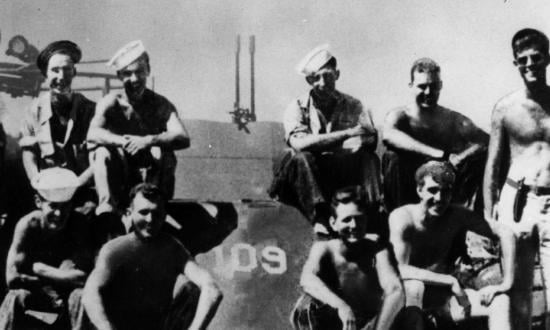In April 1943, Lieutenant (junior grade) John F. Kennedy assumed command of an 80-foot, 40-ton Elco motor torpedo boat (MTB) at Tulagi in the Solomons. His command of PT-109 lasted less than four months, ending on the night of 1–2 August when the boat was cut in two by the Japanese destroyer Amagiri in Blackett Strait—the waterway that connects Vella and Kula gulfs.
Perhaps because Kennedy later benefited from the incident during his campaigns for political office—his father made sure the PT-109 story received much favorable attention, and many of Kennedy’s crew actively campaigned for him—there
have been a number of attempts to discredit his performance. These attempts are despite the fact that the Navy saw fit to award him a Navy and Marine Corps Medal for his courage and leadership during the incident.
Among Kennedy’s critics are those who question how he could be so unaware of a relatively large Japanese ship bearing down on him. It is probably a safe assumption that those critics have never been at sea on a moonless, starless night and have not experienced the black velvet that envelops sailors under those conditions. Unlike driving a car at night, when there are headlights and streetlamps to offset the dark, it is a strange sensation to be driving a ship into a shroud of total darkness, trusting that there is nothing lurking ahead except empty water. It is important to note that even though many ships were equipped with radar by this time, PT-109 was not one of them, so Kennedy and his crew were steaming blind as they patrolled Blackett Strait. And, since warships steam at darken ship during wartime, the Japanese destroyer would have provided no visual assistance to the lookouts on the hapless PT boat.
Critics also have questioned Kennedy’s decision to operate on only one engine, reducing his ability to respond with alacrity. They contend that he should have taken advantage of the high speed and maneuverability of his MTB by using all three engines. However, Kennedy was employing tactics appropriate to the situation.
Dick Keresy (commander of PT-105 and author of the Naval Institute Press book by the same name) explained, “At night in the tropics, our wake, which was large for such a small boat, glowed madly from bioluminescence.” That strange phenomenon is familiar to any sailor who has gone “down to the sea in ships” and marveled at the dancing constellations that leave a temporary but vivid trail behind a vessel moving at substantial speed. Indeed, I once briefly thought my destroyer was under attack when a school of dolphins playfully charged at us in the Arabian Sea. Their movement generated blazing contrails in those fauna-rich waters that looked much like the attack of Captain Nemo’s submarine as depicted in the Jules Verne classic movie 20,000 Leagues Under the Sea (which we had coincidentally watched the night before in the wardroom!). Keresy added, “I also followed the practice of running only on the center engine, both on the 105 and later as a division leader, [because] at any speed above idling that wake was a long shining arrow pointing right up our ass.”
Another criticism appeared in an article (“Did JFK’s Order Sink PT-109?”) published in the February 2003 issue of Naval History magazine. The author contends that Kennedy may have tried to throttle up without first opening the flaps on the boat’s mufflers, causing the boat to stall, rendering her vulnerable to the onrushing destroyer. The article is more speculative than definitive, offering conflicting accounts and suppositions that question, among other things, whether Kennedy or the motor machinist mate (“motormac”) on watch should have opened the flaps.
As it happened, only the contrast of the destroyer’s bow wave—formed by her 40-knot passage through the strait—made Kennedy aware of the large shape looming out of the darkness when it was less than 300 yards away. The official report of the incident stated that “scarcely 10 seconds elapsed between time of sighting and the crash.” The description of how the engines were operated in MTBs as explained in the report reduces the available reaction time even more. Whether Kennedy or his motormac had failed to open the flaps in that adrenaline-charged moment, it would have made little or no difference in the collision, at best altering the point of impact by a few feet along the boat’s 80-foot length.
In contrast to those and other attempts to discredit the future Commander-in-Chief, Kennedy has often been called a hero, an appellation that he himself would challenge when asked about his heroic actions by replying: “It was involuntary. They sank my boat.” While it is true that there is nothing valiant to be discerned in the collision itself, there is no doubt that Kennedy’s leadership and performance in the aftermath was indeed heroic. None of the ten surviving crew members ever expressed anything but praise and gratitude for his getting them through the ordeal of survival and rescue. In his last public interview in August 1993, Gerard Zinser, the last survivor, summed it succinctly when he said of Kennedy: “He had courage.”









